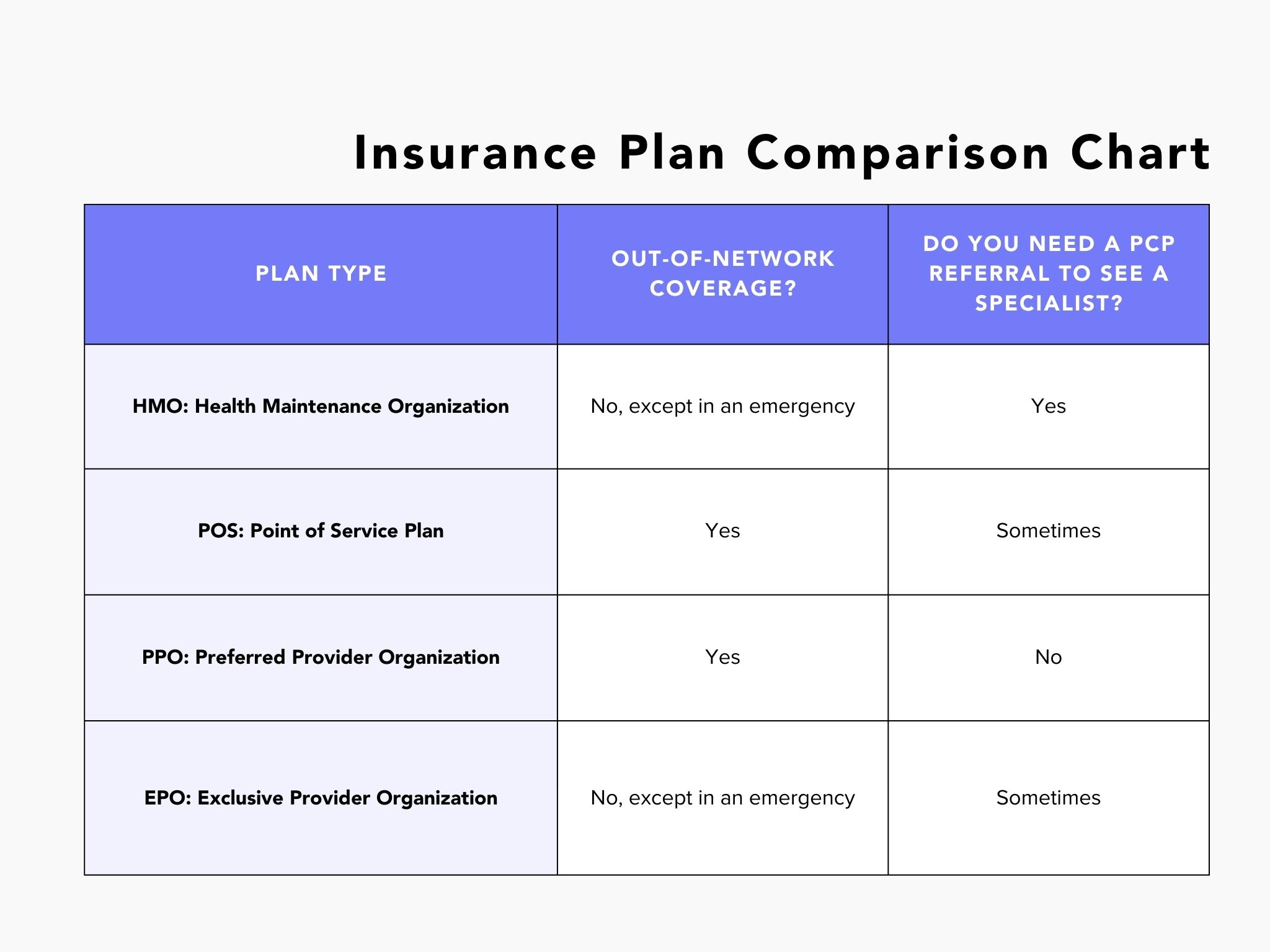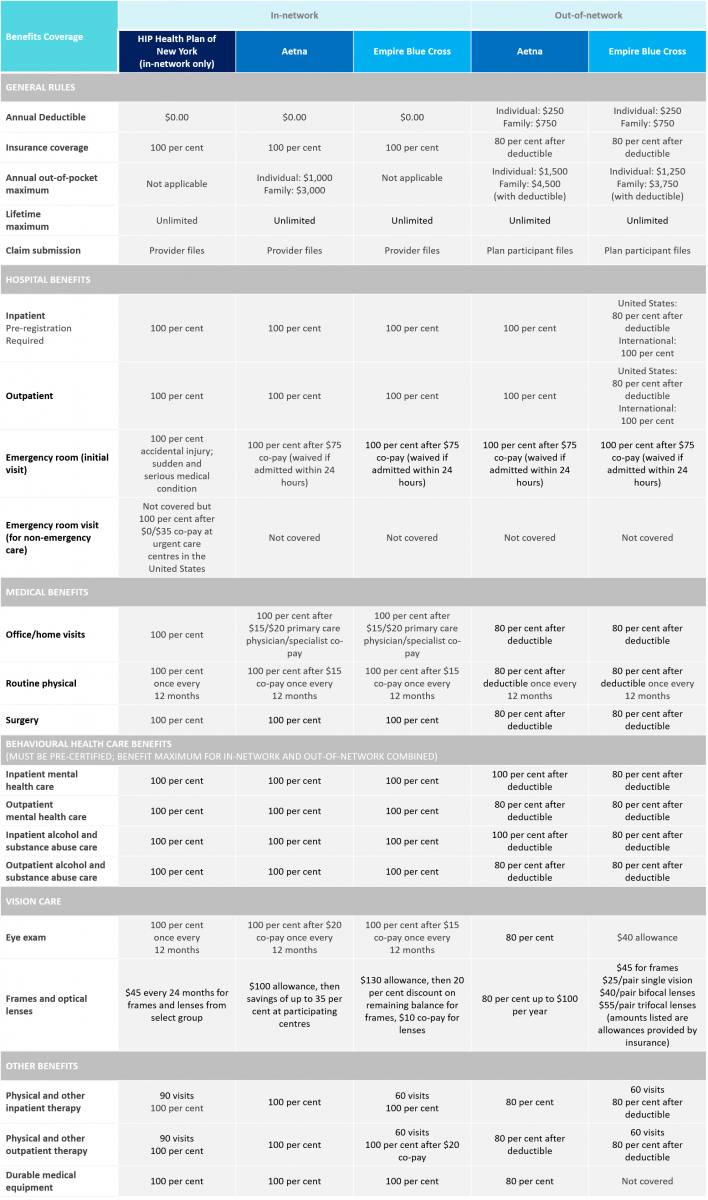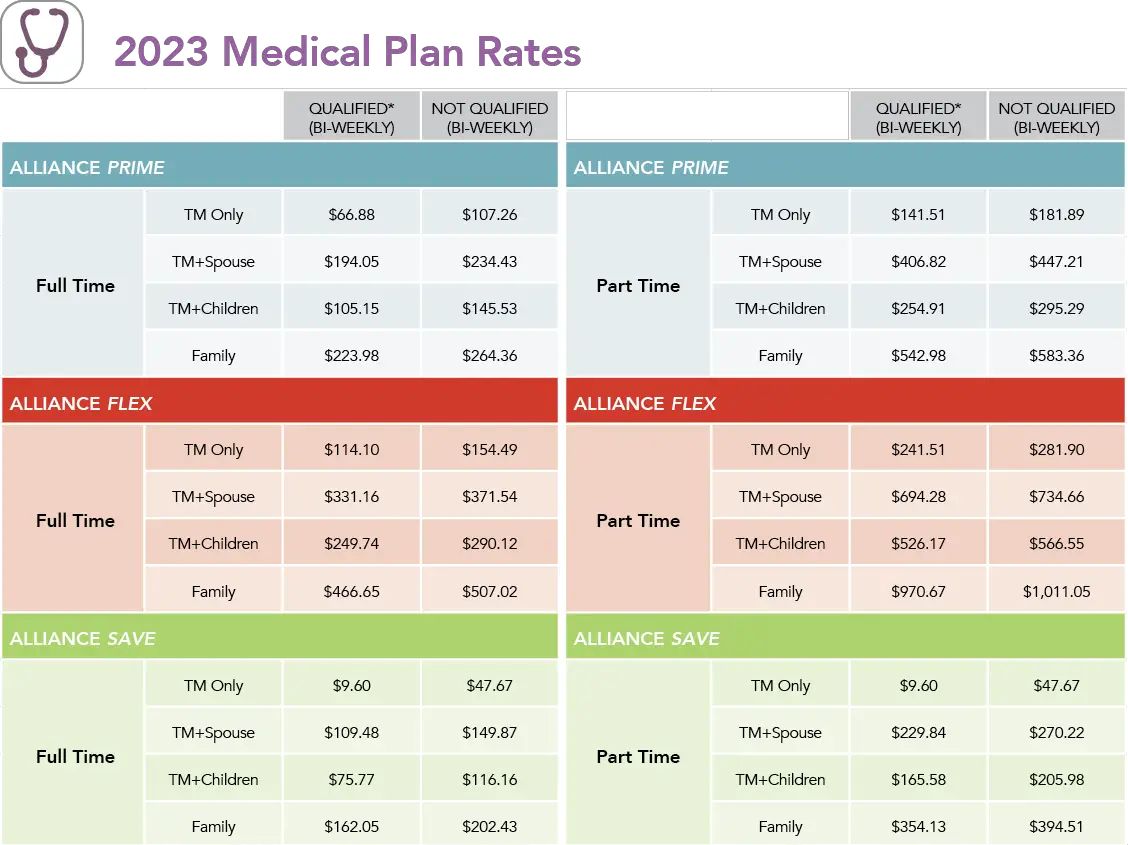When comparing health insurance plans, consider factors like premiums, coverage, and network providers. It’s important to evaluate your healthcare needs and budget to choose the most suitable plan.
With various options available, such as HMO and PPO, understanding the differences can help you make an informed decision. Researching top insurance providers like Blue Cross Blue Shield, Kaiser Permanente, Oscar, and Aetna CVS Health can guide you towards the best plan for your specific requirements.
By comparing features and benefits, you can select a health insurance plan that aligns with your individual needs and priorities.

Credit: www.jobsage.com
Introduction To Health Insurance Plan Comparison
When selecting a health insurance plan, it is crucial to compare different options to ensure you are choosing the most suitable one for your needs. Understanding the various factors that influence plan selection can help you make an informed decision that aligns with your healthcare requirements and financial considerations.
Importance Of Choosing The Right Plan
- Financial Protection: Ensures coverage for medical expenses.
- Access to Care: Enables you to see preferred healthcare providers.
- Health Needs: Tailored to address your specific health conditions.
- Peace of Mind: Offers security and support during health emergencies.
Factors Influencing Plan Selection
Several key factors play a role in determining the most suitable health insurance plan for an individual or family. These factors include:
- Premium Costs: Monthly payment for coverage.
- Deductibles: Amount you pay before insurance kicks in.
- Co-payments: Fixed amount paid for healthcare services.
- Coverage Network: Providers and facilities included in the plan.
- Prescription Drug Coverage: Medication benefits included.
- Out-of-Pocket Maximum: Limit on total costs you pay.
Types Of Health Insurance Plans
When comparing health insurance plans, it’s important to consider factors like coverage options, premiums, deductibles, and network providers. Understanding the differences between HMOs and PPOs can help you select the plan that best fits your healthcare needs and budget. Researching and comparing various plans can help you make an informed decision tailored to your specific requirements.
Types of Health Insurance Plans Choosing the right health insurance plan can be overwhelming, especially with the variety of options available. Understanding the different types of health insurance plans can help you make an informed decision. The four main types of health insurance plans are HMO, PPO, EPO, and POS. Each plan has its own unique benefits and drawbacks, so it’s important to carefully consider each one before making a decision. Differences between HMO, PPO, EPO, and POS HMO (Health Maintenance Organization) plans typically have lower monthly premiums and require you to choose a primary care physician (PCP) who acts as your main point of contact for all healthcare needs. You may need a referral from your PCP to see a specialist, and you may only receive coverage for medical services rendered by providers within the HMO network. HMOs are a good option if you don’t require frequent specialist visits and prefer lower out-of-pocket costs. PPO (Preferred Provider Organization) plans tend to have higher monthly premiums, but offer greater flexibility in terms of healthcare provider choice. You can see providers both in and out of network without a referral, although you may pay higher out-of-pocket costs for out-of-network care. PPOs are a good option if you require frequent specialist visits or prefer greater flexibility in provider choice. EPO (Exclusive Provider Organization) plans are similar to PPOs in that they offer greater flexibility in provider choice. However, EPOs do not typically offer out-of-network coverage, meaning you may face higher out-of-pocket costs if you see an out-of-network provider. EPOs are a good option if you want greater flexibility in provider choice but are willing to stay within the network. POS (Point of Service) plans combine elements of HMOs and PPOs. You typically have a primary care physician who acts as your main point of contact, but you may have the option to see out-of-network providers for certain services. POS plans tend to have higher monthly premiums than HMOs but lower than PPOs. POS plans are a good option if you want greater flexibility in provider choice but prefer a primary care physician to coordinate your care. Pros and cons of each plan type Here’s a breakdown of the pros and cons of each health insurance plan type: | Plan Type | Pros | Cons | | — | — | — | | HMO | Lower monthly premiums, lower out-of-pocket costs, coordinated care | Limited provider choice, may require referrals for specialist care | | PPO | Greater provider choice, no referrals required, out-of-network coverage available | Higher monthly premiums, higher out-of-pocket costs for out-of-network care | | EPO | Greater provider choice, lower monthly premiums | No out-of-network coverage, higher out-of-pocket costs for out-of-network care | | POS | Greater provider choice, coordinated care, out-of-network coverage available for certain services | Higher monthly premiums than HMOs, may require referrals for specialist care | In conclusion, choosing the right health insurance plan requires careful consideration of your healthcare needs, budget, and provider preferences. Understanding the differences between HMO, PPO, EPO, and POS plans can help you make an informed decision and ensure that you have the coverage you need for your health and well-being.Key Features To Consider
When comparing health insurance plans, it’s essential to carefully consider the key features that will impact your coverage and access to healthcare. Understanding the details and limitations of the coverage, as well as the network size and accessibility, can help you make an informed decision that meets your specific needs. Let’s delve into the key features to consider when evaluating health insurance plans.
Coverage Details And Limitations
One of the most critical aspects of a health insurance plan is its coverage details and limitations. Understanding what medical services and treatments are covered, as well as any limitations or exclusions, is crucial for ensuring that you have the necessary support when you need it most. Consider the following aspects when evaluating coverage:
- Specific medical services covered, such as hospitalization, prescription drugs, preventive care, and mental health services.
- Limitations or exclusions for certain treatments or pre-existing conditions.
- Out-of-pocket costs, including deductibles, copayments, and coinsurance for covered services.
Network Size And Accessibility
The network size and accessibility of a health insurance plan can significantly impact your ability to access quality healthcare services. Evaluating the network can help you determine whether your preferred doctors, specialists, and hospitals are included. Consider the following factors related to network size and accessibility:
- In-network providers: Ensure that your current healthcare providers are part of the plan’s network to avoid out-of-network costs.
- Provider locations: Assess the availability of in-network healthcare facilities and specialists in your area.
- Referral requirements: Determine if the plan requires referrals to see specialists or obtain certain medical services.

Credit: www.un.org
Evaluating Costs
When comparing health insurance plans, evaluating costs is a crucial step in making an informed decision. Understanding the various expenses associated with different plans can help you choose one that best fits your budget and healthcare needs.
Understanding Premiums, Deductibles, And Copays
Premiums, deductibles, and copays are key cost components of health insurance plans. Premiums are the regular payments made to the insurance company to maintain coverage. Deductibles represent the amount you must pay out of pocket before the insurance coverage kicks in. Copays are fixed fees paid for specific services or prescriptions.
Comparing Out-of-pocket Expenses
It’s essential to compare the out-of-pocket expenses of different health insurance plans. This includes evaluating the total potential costs, factoring in premiums, deductibles, copays, and coinsurance. Understanding these expenses ensures that you are prepared for the financial implications of your healthcare needs.
Plan Flexibility And Freedom
When it comes to health insurance, it’s crucial to consider the level of flexibility and freedom offered by different plans. Plan flexibility and freedom can significantly impact your access to healthcare providers and the overall quality of care you receive. Let’s explore the key factors that determine the level of flexibility and freedom in health insurance plans.
Provider Choice Flexibility In Ppo Vs. Hmo
PPO: With a Preferred Provider Organization (PPO) plan, you have the freedom to choose healthcare providers both in and out of the plan’s network. This means you can visit specialists or hospitals without needing a referral from a primary care physician, giving you greater flexibility in accessing care.
HMO: In contrast, a Health Maintenance Organization (HMO) plan typically requires you to select a primary care physician (PCP) and obtain referrals from them to see specialists within the network. This can limit your provider choices and may involve more administrative steps to access specialized care.
Referral Requirements And Specialist Access
PPO: PPO plans generally offer direct access to specialists without the need for referrals, allowing you to seek specialized care promptly and efficiently. This streamlined process can be especially beneficial if you have ongoing health needs that require the expertise of various specialists.
HMO: HMO plans often mandate referrals from your primary care physician to see specialists within the network. While this can help coordinate your care, it may introduce delays in accessing specialized services and require additional steps to obtain necessary referrals.
Additional Benefits And Perks
When comparing health insurance plans, it’s essential to consider the additional benefits and perks offered by each plan. These extra advantages can make a significant difference in the overall value and coverage provided. Let’s delve into the various aspects of additional benefits and perks that should be taken into account.
Wellness Programs And Preventive Care
- Wellness incentives such as gym membership discounts or rewards for healthy behaviors can encourage and support individuals in maintaining a healthy lifestyle.
- Access to fitness classes and wellness workshops can contribute to the overall well-being of the insured individuals.
- Coverage for preventive services like vaccinations, screenings, and annual check-ups is crucial for early detection and prevention of potential health issues.
- No-cost preventive care can save money in the long run by addressing health concerns before they become more serious and expensive to treat.
Mental Health And Emergency Coverage
- Access to mental health professionals and counseling services can be invaluable for individuals dealing with mental health challenges.
- Coverage for therapy and treatment for mental health conditions ensures comprehensive support for overall well-being.
- Emergency room visits and urgent care coverage provide peace of mind in unforeseen medical situations.
- Ambulance services and emergency medical transportation can be crucial in critical situations.
Tools And Resources For Plan Comparison
Discovering the right health insurance plan is crucial. Utilize a range of tools and resources to compare various health insurance plans and make an informed decision that fits your needs and budget. From cost comparison charts to online quote tools, these resources offer valuable insights for plan comparison.
Using Online Comparison Tools
One of the most convenient ways to compare health insurance plans is by using online comparison tools. These tools are easy to use and can help you quickly compare different plans based on your needs and budget. Many insurance companies offer their own online comparison tools, but there are also third-party websites that allow you to compare plans from multiple insurers. When using these tools, make sure to enter accurate information about your health needs and budget to get the most accurate results. You can compare plans based on factors such as monthly premiums, deductibles, copays, and out-of-pocket maximums.Leveraging State And Federal Resources
Another useful resource for comparing health insurance plans is state and federal government websites. These websites offer information on different plans available in your area, as well as tools to help you compare plans based on price and coverage. For example, HealthCare.gov is a federal website that allows you to compare plans based on your location and other factors such as income and family size. You can also find information on state-specific resources, such as the Office of Public Insurance Counsel in Texas, which offers a comparison chart for different health plan types. Using these resources can help you make an informed decision when choosing a health insurance plan. Whether you prefer online comparison tools or government resources, taking the time to compare different plans can save you money and ensure that you have the coverage you need.
Credit: www.financialsamurai.com
Making A Decision
When choosing a health insurance plan, it’s essential to compare options carefully. Consider coverage, premiums, and out-of-pocket costs to make an informed decision. Evaluating benefits and provider networks can help you select a plan that meets your needs.
Steps To Enroll In A Health Plan
To enroll in a health plan, start by researching different options available in your area. Compare coverage, costs, and benefits. Next, gather necessary documents such as ID, proof of income, and personal information. Contact the insurance provider or visit their website to start the enrollment process. Review the terms and conditions carefully before submitting your application.Review And Adjustment Of Plans
After enrolling in a health plan, regularly review your coverage to ensure it still meets your needs. Consider any life changes that may require adjustments to your plan. Reach out to your insurance provider for any updates or changes. Compare different plans annually to make sure you have the best coverage for your current situation. Make adjustments as needed to optimize your health insurance benefits.Frequently Asked Questions
Is Hmo Or Ppo Better?
HMO plans have lower premiums and out-of-pocket costs. PPO plans offer more flexibility but higher costs overall.
What Are The Top 3 Health Insurances?
The top 3 health insurances are Blue Cross Blue Shield, Kaiser Permanente, and Oscar. These companies offer high-quality plans and health management programs.
Which Health Insurance Is Best Now?
Blue Cross Blue Shield, Kaiser Permanente, and Oscar are top choices for health insurance. They offer quality plans, management programs, and same-day care.
What Is The Best Health Insurance?
The best health insurance varies based on individual needs. Consider Blue Cross Blue Shield, Kaiser Permanente, Oscar, or Aetna CVS Health.
Conclusion
Comparing health insurance plans is essential for finding the best coverage for your needs. By carefully evaluating the benefits, costs, and network options, you can make an informed decision. Remember to consider your specific healthcare requirements and budget to select the most suitable plan.
This will ensure that you have the necessary coverage for your health and well-being.


